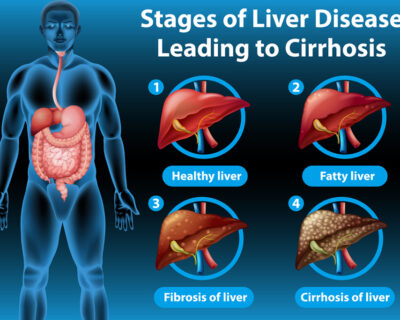
What are the ingredients in fast-food beef, fish, and chicken? It Isn’t Always 100% Meat
- Fast-food restaurants‘ beef, poultry, and fish products aren’t always comprised entirely of flesh.
- They may include additional additions, such as textured vegetable protein or a soy product, to reduce the cost of production.
- These forms of processed meats, according to health experts, are less healthful than unprocessed meats.
- If you’re concerned about the quality of the meat served at a
- fast-food restaurant, examine the menu’s ingredients list, since it may include unprocessed options as well as plant-based alternatives.
What about the highly processed foods
The New York Times just did a deep dive to get to the bottom of one of our generation’s most pressing questions:
Is the tuna in Subway’s popular sandwiches actually tuna or… something else?
Journalist Julie Carmel investigated response to a class-action complaint launched against the fast-food giant in California in January. The lawsuit claims that the tuna fish sandwiches sold by the company “are devoid of tuna as an ingredient.”
The lawsuit gained widespread attention, even drawing sympathy from pop sensation Jessica Simpson.
The tuna controversy sparked a long-running debate over what exactly is in the meat we eat at fast-food restaurants.
What about the highly processed foods you may purchase at McDonald’s or Subway? Are they healthy? Are they as advertised and everything they claim to be?
The truth about fast-food meat
“There simply is no reality to the allegations in the case that was filed in California,”
a Subway spokeswoman responded in an email to The New York Times.
“Subway restaurants receive 100 percent cooked tuna, which is blended
with mayonnaise and utilized in freshly created sandwiches, wraps,
and salads that are presented to and appreciated by our guests,” they continued.
Carmel, for one, sent Subway tuna sandwich samples to a commercial food testing facility. The outcomes were a bit of a mixed bag.
The scientists discovered that the samples she brought over contained “no amplifiable tuna DNA”
and that they were unable to “identify the species” included in the sandwich goods.
According to a representative for the lab, two conclusions can be drawn from this:
either the tuna products are “so heavily processed” that a definite identification of tuna is
difficult, or “there’s just nothing there that’s tuna” in the samples sent over.
Carmel cites an earlier Inside Edition article that revealed positive tuna identification in samples taken from three Queens Subway sites.
Amber Pankonin, MS, LMNT, a registered dietitian, provided more context for Healthline.
“It depends on the brand, who their supplier is, and what they offer on the menu,”
Pankonin said when asked if the suspicions that Subway might be selling
problematic meat products are a widespread industry practice in fast food.
fast-food establishments
The Food and Drug Administration (FDA) requires fast-food chains with
more than 20 outlets in the United States to disclose their nutritional information publicly, according to her.
“Some fast-food establishments employ textured vegetable protein or
soy product as a filler in their meat burgers or tacos,” she said. “If you’re concerned, look for the phrase “100% beef” in the menu description and double-check the allergen information.”
Pankonin pointed to Healthline to easily accessible information that you can
turn to if you’re concerned about the items you’re eating in a fast-food restaurant.
This includes formal FDA Trusted Source menu labeling rules as well as publicly available information on beef sourcing from well-known brands such as McDonald’s, Wendy’s, and Taco Bell.
Dana Hunnes, Ph.D., MPH, RD, a senior dietitian at UCLA Medical Center, agreed with Pankonin that it all depended on the food in question.
She told Healthline that “faking” a product that appears exactly like what it is, such as a meat patty-based hamburger, is “challenging.”
“However, if it is a fried nugget, such as a chicken nugget, the question may become a little murkier, as there are often several additional ingredients in the product, such as breading, starch, and dextrose, for example, that could either mask an alternative meat product or make up more, by weight, of the product than the ‘chicken’ or so-called named meat itself,” Hunnes, who is also an author of the forthcoming book “Recipe for Survival.”
Is there any nutritional value in fast food?
Hunnes advises individuals to minimize or avoid meat consumption, noting that a plant-based diet is generally better for one’s overall health.
If you must eat meat-based goods, she recommends “unadulterated meat” since you will be eating “unprocessed meat product, which in some ways will be a wee bit healthier than ‘processed meat products.’”
Many businesses, including fast-food joints, are now offering more plant-based options, according to her. Her preference is to go toward these options because they are better for the ecosystem as a whole.
Pankonin said it’s now rather easy to find nutrition and allergen information for your favorite fast-food items just by glancing at menu labeling regulations. She advised you to stay away from anything that might have allergies.
“Those goods that contain fillers will probably be quite similar nutritionally,” she noted, noting that it all depends on the specific restaurant and their suppliers.
So, how good is fast-food meat for you? There isn’t a one-size-fits-all solution.
“They [fast-food meat items] may perform differently in terms of culinary preparation and flavor approval. There may be extra moisture or flour in the product as a result of the fillers, which could affect cooking and quality. And, depending on how much filler is used, the flavor of the product may be affected,” Pankonin explained.
“Standardized products can provide consistency in terms of assessing nutrition facts,” she noted, referring to fast-food establishments. When comparing this to shopping for and creating a burger from scratch at home, the “meat that is utilized and the portion that is prepared” are the most important factors.
“When I give people advice on what to get at fast-food places, it depends on their health goals and whether or not they have any food allergies.” “I can assist them in evaluating calorie and nutrition statistics to see if specific menu items are compatible with their overall diet plan,” Pankonin added.
What are some excellent menu choices at your favorite fast-food joint if you’re concerned about the news concerning fast-food meat?
”In terms of health, certain plant-based substitutes will be marginally better than actual meat. “I say incrementally because it’s still a processed food product with salt,” Hunnes explained.
“However, they are healthier in the sense that their fats are derived from plant-based sources, which are generally healthier than fats derived from animal sources, and they may also contain fiber, which meat does not,” she explained.
It’s all about your nutritional and health habits, according to Pankonin.
“Again, I believe it is dependent on the individual’s health goals as well as any dietary sensitivities. If someone has a soy allergy, for example, they should be informed about meat fillers and avoid some of the plant-based items on the menu,” she said.
Alternatives that you can make in your kitchen
If you’re creating a burger at home and want to cut the fat or calories, Pankonin suggests producing “a burger blend” with ground beef and veggies like onions and mushrooms.
She suggested coming up with something you can prepare and freeze ahead of time as a go-to breakfast option.
Use a whole-wheat English muffin, an egg, and a slice of cheese to make a breakfast sandwich. This could be a quick and easy alternative to grabbing your favorite breakfast sandwich on the way to work.
She also mentioned that no-bake recipes are a smart way to save time in the kitchen. Wraps that can be stored in a cooler and taken to a family picnic or the lunchroom are also smart options, according to Pankonin.
She also stated that charcuterie boards are a must-have.
She described them as “adult Lunchables,” which she enjoys. “These are quite simple to put together and can serve as a healthy alternative to fast food. Instead of a board, use a bento box to package your lunch.”
While it may appear to be cheaper to go to a fast-food restaurant and purchase four burgers, four fries, and four soft drinks for your family or group of friends for $20, Hunnes warns that you may be harming your general health and “paying for it later.”
“However, because most people do not plan when it comes to meals, you can produce something similar, healthier, and maybe even cheaper at home,” Hunnes added.
Impossible or Beyond Burger plant-based meats, she explained, cost $9 to $11 per pound. A pound of meat can feed up to four people. Wheat buns are only $3 for around 8, with lettuce, tomato, and onion costing an additional $4, and soda costing an additional dollar or two.
What’s the grand total? For your own homemade burgers, that works out to about $17.
Hunnes continued, “It’s actually cheaper and a lot healthier to make at home.” “And, if you were to use genuine meat instead of ground beef, it would probably be even cheaper because most ground meats are around $5 per pound.”
While we may not have solved the great tuna enigma of 2021, there are a few certain things.
Always check the dietary and nutritional history of the food you’re eating, see whether it contains allergens, and think about cheaper and better alternatives for yourself and your family.






